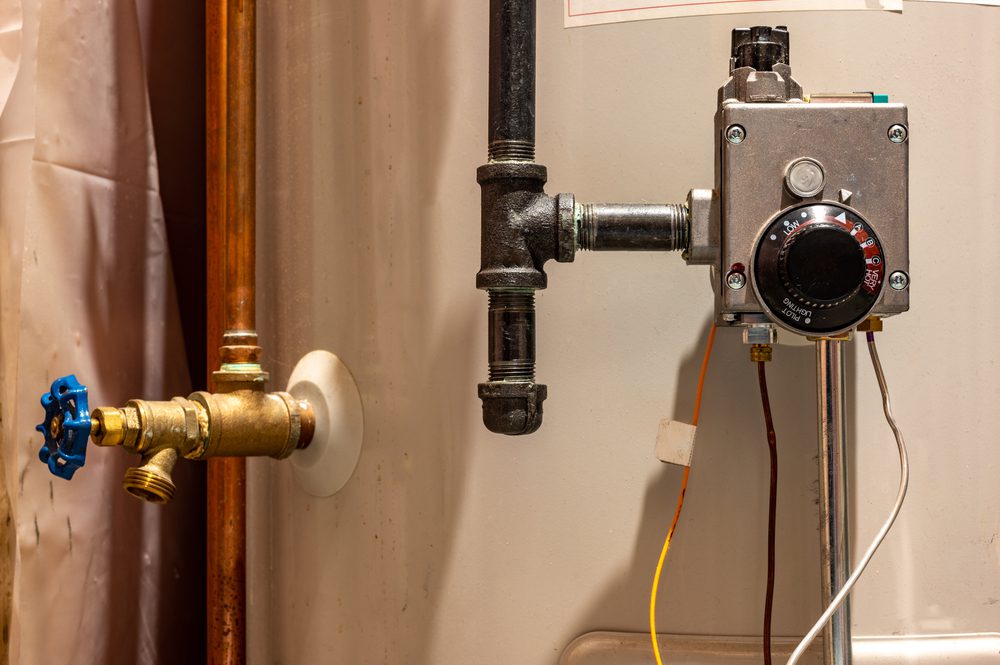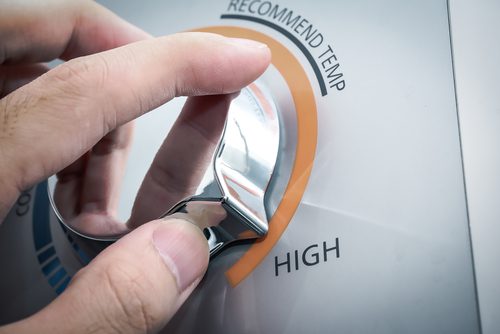Blog
3 Reasons to Lower Your Water Heater's Temperature

Is your water too hot to touch when you turn the faucet to the hottest it can go? Your water heater temperature is likely set too high.
Did you know that you can lower the temperature of your water heater? Most homeowners don’t even think about it, but there are several benefits to lowering the water heater temperature while maintaining enough hot water for everyday household use.
Water heaters from the manufacturer usually have their temperature set to 140 degrees Fahrenheit. For most American families, 120 degrees is enough to keep everyone comfortable with enough hot water without causing scalding or burning.
How to Increase and Decrease Your Water Heater’s Temperature
To find out how hot your water is, go to the farthest tap from your water heater in the house, let the hot water run until it is the hottest it will get, and measure the temperature. If it is at 140 degrees, you can turn it down. Wait two hours and measure the temperature again. Water heaters set to 120 degrees will give you water that is plenty hot while remaining safe to use.
The temperature controls for gas and electric water heaters are a little different. If you have it, consult your water heater’s manual. If you are unsure where it is, here are some basic instructions for changing the water heater temperature.
How To Increase or Decrease Your Gas Water Heater Temperature

The temperature control on a gas water heater is usually located toward the bottom of the unit. This dial does not give you exact degrees. It is often a black or red knob with writing on it. It will have words like Low, Hot, Very Hot, or Hot and Warm. It will typically have a scalding warning on it as well.
Follow the directions on the dial to decrease your water heater temperature, which usually means turning the dial clockwise. Pilot or Vacation means the gas is on just enough to keep the pilot burner lit without producing much heat.
If you often run out of hot water, turning the temperature up can increase your hot water supply. Mixing this extra hot water with regular water at the faucet allows you to extend how long it will last.
Remember that if you turn your faucet to the hottest setting and you’ve increased your water heater temperature, you risk scalding yourself. The better option is to upgrade to a larger water heater or consider upgrading to an energy-efficient tankless water heater. To make your water heater hotter, follow the directions on the dial; usually, this means rotating the dial counterclockwise.
How To Increase or Decrease Your Electric Water Heater Temperature
Electric water heater temperature controls are typically hidden behind a screw-on plate. Unscrew the plate to access the water heater temperature control. Some electric heaters have upper and lower temperature controls. You’ll want these temperature controls to be at the same temperature level.
3 Benefits of Lowering Your Water Heater Temperature
Here are three good reasons to check your water heater temperature setting and lower it:
1. Save Energy by Lowering Your Water Heater Temperature
When a water heater is set to 140 degrees Fahrenheit or higher, it loses heat faster. As heat bleeds off the water heater more quickly to a lower temperature environment, the burner must turn on more frequently to keep your water temperature at this high temperature.
According to the EPA, at 140 degrees or higher, you can waste anywhere from $46 to $61 annually in heat losses alone. Add the savings from lowering your temperature, and you could save as much as $400 per year.
On average, lowering your temperature from 140 degrees to 120 can reduce your standby heat loss and save up to 15 percent in annual water heating expenses.
2. Reduce Chances of Hot Water Burns
Water temperatures above 120 degrees increase the risk of scalding. Exposure to hot water above 140 degrees can cause severe scalding and skin damage. These hot water temperatures are especially hazardous to children and older people, who may have slower reaction times to scalding water.
If your hot water is scalding hot, your best option is to turn the temperature down.
3. Increases Water Tank Service Life
When water is above 120 degrees, it accelerates the accumulation of hard water mineral deposits. This sediment, especially the common calcium carbonate, gets layered onto the inside of the water tank. Sediment can create an insulating layer, preventing your water heater from heating up efficiently.
Sediment accumulation can also trigger water heater tank corrosion and begin eating through your water tank’s walls. If your walls rust enough and get thin enough, pressure in the water tank can cause it to burst, causing significant water damage to your home. Early signs of corrosion will be flakes of metal or a rust color in your hot water.
You can slow down this corrosion process by keeping your water tank at or below 120 degrees. Your water tank should also be maintained and drained on a regular basis to keep it in top condition and flush out hard mineral water deposits.
If you need help with your water heater in Cincinnati, contact Apollo Home today.


